What is a Software Architecture Pattern?
Software architecture patterns are a way to describe the design of software systems. They are a set of guidelines for how to design software systems. The goal of these patterns is to help developers create better software by providing them with a set of proven solutions that they can use in their designs or tailor to fit their needs.
Five Current and Emerging Software Architectures
1. Microservices
Microservices are a software architecture style used to develop or migrate a single application as a suite of small, autonomous services, each running in its process and communicating with lightweight mechanisms such as an HTTP resource API. These services are built around business capabilities and are independently deployable by fully automated deployment pipelines. Each service can be developed by a different team, using its process and technology stack.
Microservices allow for faster delivery of new features and quicker response to changing business needs. They are gaining significant popularity with developers and executives as cloud-native deployments are growing.
“By 2025, Gartner estimates that over 95% of new digital workloads will be deployed on cloud-native platforms, up from 30% in 2021.”
Microservices require a structured approach for designing, developing, testing, building, and operating.
Platforms and services that can help accelerate microservices development
Whether you are creating microservices using ASP.net core, Spring boot, Django, or Flask, the following platforms and services can help accelerate and manage microservices development.
Java Spring Cloud can help orchestrate microservices with several ready-to-run cloud patterns like service discovery, load-balancing, circuit-breaking, distributed tracing, and monitoring including API gateway.
Fully managed microservices platforms are also available in the cloud like AWS ECS Fargate, Azure Service Fabric cluster, Service Fabric mesh, and Azure Spring Apps.
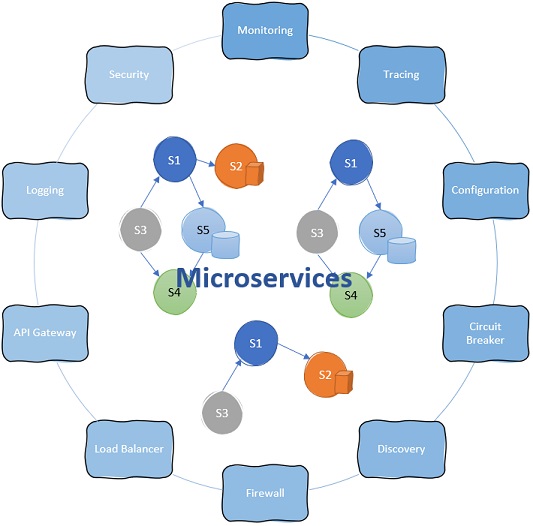
Figure 1: Microservices with ready-to-run cloud patterns
2. Micro Frontend
Micro frontend software architecture style is an emerging trend in web development that is becoming more popular as the industry moves towards more lightweight and faster time-to-market solutions. Micro frontends are small, lightweight, and loosely coupled, which makes them easy to maintain and update.
Frameworks and patterns that can help accelerate micro frontend applications development
Webpack Module Federation Plugin
The module federation plugin in Webpack 5.0 enables the development of micro frontend applications by dynamically loading the external modules built using Webpack 5.0 into the host container. The module federation plugin supports sharing and resolving dependencies between host and remote code.
single-spa
A JavaScript router for front-end microservices, which brings together multiple JavaScript micro frontends in a front-end application, single-spa enables:
- Use of multiple frameworks and versions on the same page without refreshing
- Deployment of micro frontends independently
- Lazy loading code for improved load times
FrintJS
A modular JavaScript framework for building scalable and reactive applications, FrintJS:
- Provides a structure to applications
- Is an environment and rendering library agnostic
- Is a modular architecture
- Embraces reactive programming
- Is progressive and easy to adopt in existing applications
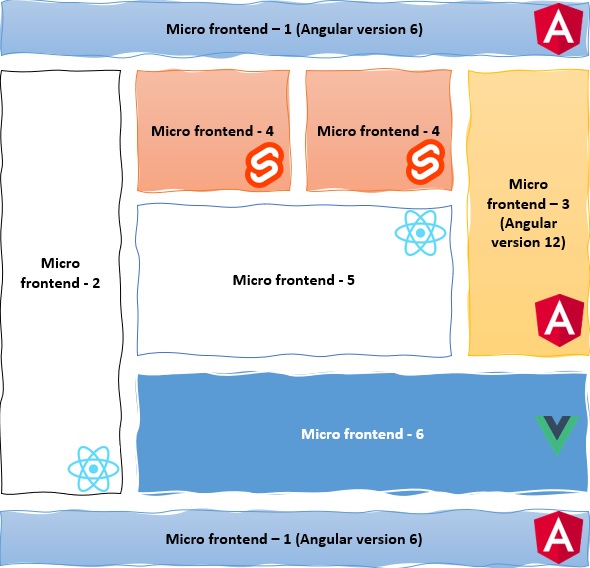
Figure 2: Frontend application hosting micro frontends developed using multiple frameworks and versions
Other notable frameworks and features:
- bit.dev is a cloud-based open-source toolchain for component-driven software, which allows users to gradually collect, extract, and reuse existing UI components.
- Piral enables users to create a modular frontend application that is extended at runtime with decoupled modules called pilets leveraging a micro frontend architecture.
- Angular Elements host the angular components inside a custom element and allow anyone to use it without knowing how Angular works.
In addition to the above frameworks, micro frontends can be developed using iFrames.
3. Layered Architecture (N-Tier Architecture)
Layered architecture is a software design pattern that separates the data and business logic from the presentation layer or, in other words, separates the system into layers. The layers are usually organized in a hierarchy, with each layer providing specific functionality to the layer above it.
Layered architecture is one of the most popular architectures for developing complex software systems. It is also known as N-Tier architecture.
The layered architecture has many benefits, such as:
- Providing a clear separation of concerns between different parts of the system
- Allowing for easier maintenance and development
- Being easier to test and debug
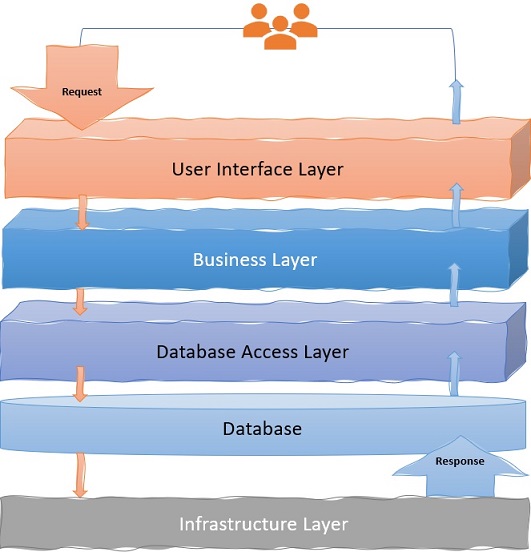
Figure 3: Traditional layered architecture
4. Controller/Worker (Primary/Replica) Architecture
Other terms for this architecture described at controller/worker- Microsoft Style GuideController/Worker Architecture is a type of distributed computing architecture and can be implemented in many ways, but the most common implementation is with a cluster of machines. The cluster will have one machine that acts as the controller and all other machines act as workers. The controller will distribute tasks to each worker, which will execute them on their own.
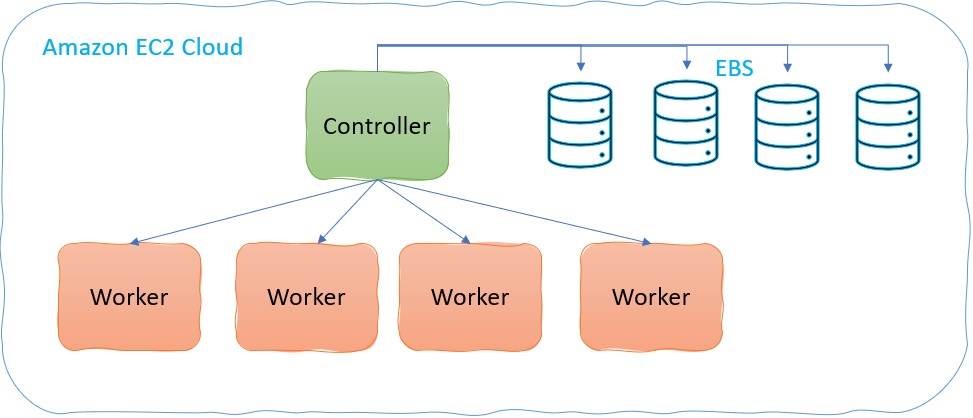
Figure 4: MIT StarCluster – an open-source cluster-computing toolkit for Amazon’s Elastic Compute Cloud (EC2) designed to simplify the process of building, configuring, and managing clusters of virtual machines on Amazon’s EC2 cloud
The controller/worker pattern is also used in data processing pipelines, where the controller process creates tasks for the worker processes to execute. The controller process can also be responsible for monitoring the progress of the worker processes and handling any errors that occur.
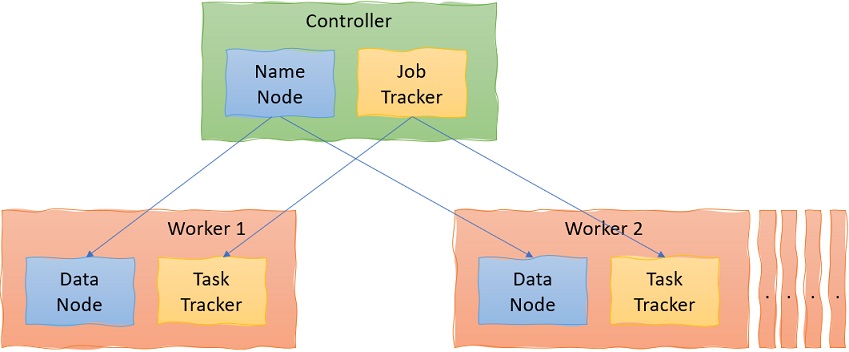
Figure 5: Controller/Worker architecture | Hadoop
5. Event-driven architecture
Event-driven architecture is a software architecture pattern that uses events to trigger and communicate between decoupled services. It is common in modern applications, especially those that are distributed or have a microservices architecture.
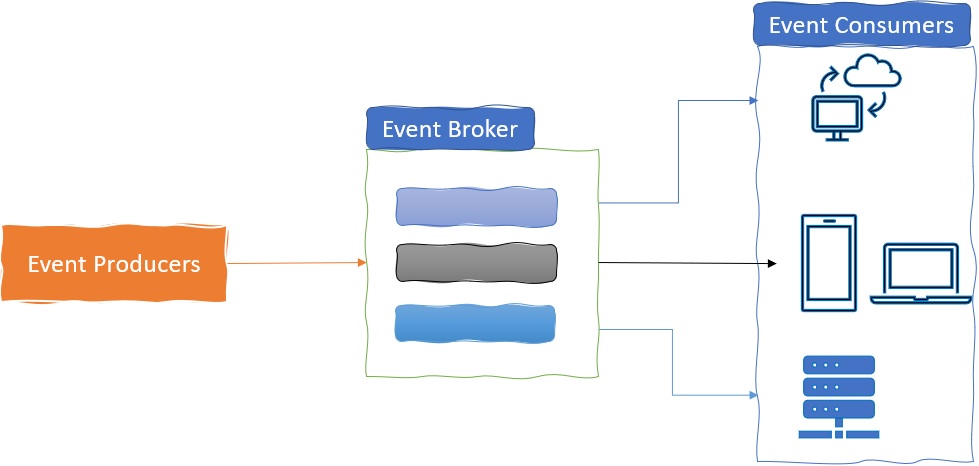
Figure 6: Event-driven architecture
The event-driven architecture pattern is asynchronous, loosely coupled, highly scalable, and can be implemented using various technologies.
Some of the frameworks and patterns to support event-driven architectures:
- Amazon EventBridge to build event buses, kinesis to collect and process large streams of data records in real-time, and Amazon Simple Notification Service (SNS) to build event topics.
- Azure Event Grid, Azure Event Hubs, and Azure Service Bus
- Apache Kafka
Conclusion: Building Better Software with the Help of Good Architectural Patterns
A good architecture pattern helps determine how the components of a software project should be put together using current and emerging technologies that are tailored to fit the business strategy, vision, and goals.
Well-designed architecture solutions improve team productivity, company profitability, and customer experience by increasing the quality, performance, and maintainability of the applications, making them easier to scale and evolve to accommodate business needs.
References:
- Amazon EventBridge | Event Bus | Amazon Web Services
- Amazon Simple Notification Service (SNS) | Messaging Service
- Azure Event Grid – Event Handler | Microsoft Azure
- Event Hubs—Real-Time Data Ingestion | Microsoft Azure
- Azure Service Bus—Cloud Messaging Service | Microsoft Azure
- Amazon Kinesis - Process & Analyze Streaming Data - Amazon Web Services
- Apache Kafka
- STAR: Cluster - Home
- Bit.dev
- Apache Hadoop
- Module Federation | webpack
- single-spa
- FrintJS
- Spring | Cloud
- Amazon ECS on AWS Fargate - Amazon Elastic Container Service
- Azure Service Fabric documentation | Microsoft Docs
- Overview of Azure Service Fabric Mesh - Azure Service Fabric Mesh
- Controller/Worker- Microsoft Style Guide
